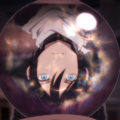More than just a Musical Masterpiece- Carole and Tuesday

One of the main reasons that I discontinued my Netflix subscription years ago was being fed up over wanting to watch a particular thing but then finding out it was not available on there. Or the series was on there at one point in time but then it was removed later on. It’s been several years now but I don’t miss it at all. In fact, the last time I absolutely wanted to watch something exclusive to Netflix was on the Fourth of July. I mean, come on, if you want to distribute a series that originated from the Far East, why not distribute it on Crunchyroll where a large portion of its audience loves media from that region of the world?
Now, “Carole and Tuesday” was brought to my attention through my old anime club, who had voted it into their prime broadcast slot last semester, and the storyline did catch my eye along with the series’ aesthetics. There was a certain… beauty in the faded and airy look of the scenery, invoking a sense of innocence and light-heartedness. There’s almost a sense that one is looking into the anime through a pane of glass in many of the scenes, though somehow the aesthetic doesn’t come off as being overly processed. The scenery itself is very cohesive as well, with the various aesthetic designs and outfits of the characters invoking a sense of diversity and creativity into the series’ whole atmosphere. Intense clash of aesthetics and style this series may be, but it comes together beautifully, more artwork than train wreck. I should also mention that this is a series that takes place on Mars in the far-off future, with colonization and immigration are spoken of in terms of planets, and robots and AI technology prevalent throughout the series.
Diversity and creativity are cores theme in “Carole and Tuesday,” with the series making references and taking jabs at certain political issues prevalent in the United States at the time of the series’ release. Each individual character somehow is able to make a lasting impact on the viewer, even if many of them appear on screen for a few episodes, if not only one, and sometimes only for a few minutes. What is also good is that while main characters Carole Stanley and Tuesday Simmons are excellent standouts, they are backed up by an enormous group of well-done secondary characters. Now, these secondary characters often reappear at different times throughout the series, reinforcing and making use of them rather than disposing of them. Not only does it show how the characters are multidimensional and layered, it also shows their rise and fall in the music industry itself, along with how they each character had ended up at their final spot in the current timeline. The series also takes a jab at certain aspects of the music industry that are fresh for debate by injecting the element of AI produced music, which has become popular and mainstream at the point in time. This is most on display with the approach that aloof genius Tao uses with his advanced supercomputer and artist Angela Carpenter, versus the approach taken by Gus, Roddy, and Tobe, who use the traditional method of producing music with the main duet of Carole and Tuesday that in this setting is deemed old-fashioned.
However, this is not just an old-versus-new, artist-versus-artist music anime series built on sales, rankings, and contests, oh no. It’s about getting one’s foot in the door, getting noticed, and life events that may affect one’s music. In fact, the series does make some strong political statements and one of the side storylines revolves around Tuesday’s mother Valerie running for political office, and taking some political positions that strongly echo positions taken by some politicians in the United States at the time. “Carole and Tuesday” somehow masterfully interweaves all of these different storylines together into a plot that steadily moves forward throughout the series and comes off as complex, consistent, cohesive, and heartfelt, one performance at a time. There are plenty of twists and turns, and while unpredictable, they are linear and smooth so they seem integrated and well thought out, a gentle push of the viewer rather than an aggressive shove. There is a jostling and unsettling nature throughout the series, reinforcing the theme that fame and fortune are difficult to achieve, built on unstable platforms, and are fleeting in nature. Contrasting the outward fame that one could achieve in the music industry with how one could fall from grace or be harmed by obsessive yandere fans gives the characters bulk and dimension, and that there is more to the lives of the musicians than what is seen in the public eye.
Oddly enough, while the series does focus on music and the journey of the main duet of Carole and Tuesday trying to make a name for themselves, music is just one component of the series and it can be argued perhaps a secondary component. Instead, it is about the treatment of people and a secondary note, about ethics, using music as a way to channel the message across. But don’t for one minute think that means the music is in any way lackluster, because the number of different styles and genres that are portrayed in the series as diverse as the character designs, and extremely heartfelt, which is the main selling point of the main duet’s music. But that brings up another point: is there anything wrong with “Carole and Tuesday?” Well… one can argue that Dahlia, Angela’s mother, is one of the most hateful characters in recent memory, using the excuse “I’m doing this for your own good” to unilaterally be oppressive and squandering her daughter’s happiness as a result. It would also have been nice if the series dove more into how the main duet of Carole and Tuesday came up with the ideas for their songs, as the way it was portrayed, the ideas just came into their minds spontaneously, resulting in instant lyrics and melodies that instantly tied themselves together to form hit songs.
Other than those two small flies in the ointment, there is much to love about “Carole and Tuesday.” It is a series that works its way into and captures your heart, making excellent use of its artful character design, beautiful scenery, diverse and poignant music, and well-paced storyline right up until the end. It’s a shame so far that the series has not made its way onto disc form in the United States, and I so far am not sure how well-known this series is outside of the anime fandom. Perhaps that is part of the reason why Netflix was chosen as the distribution platform rather than Crunchyroll: to market the series to a larger audience. The series should have mass appeal, and is one that shouldn’t be skipped. Sure, there could have been much more content. The ending, while fulfilling, conclusive, heartfelt, and timed correctly, leaves the door fully open for a second season. While the theme, plotline, and mood will be much different versus the first season, the content there for a ripe for a continuation of the main story. It’s a question now of if the series will continue, and even if it doesn’t, it’s hard to see it going down as a one-season-wonder.
For a taste of what “Carole and Tuesday” have to offer, do please check out the promotional video:





